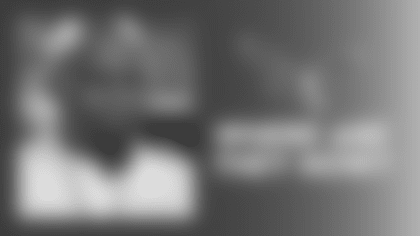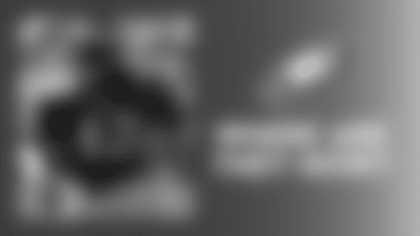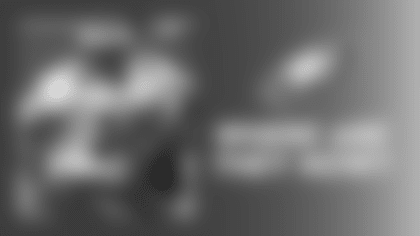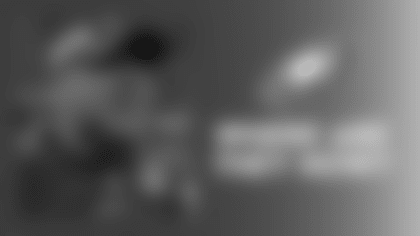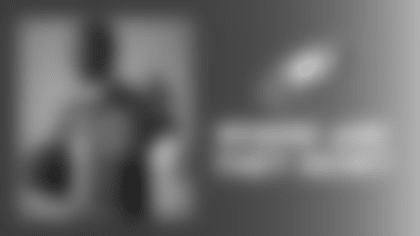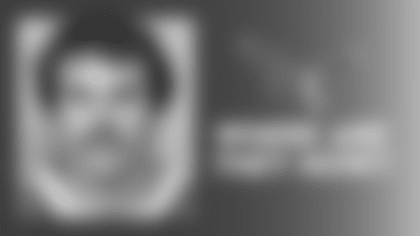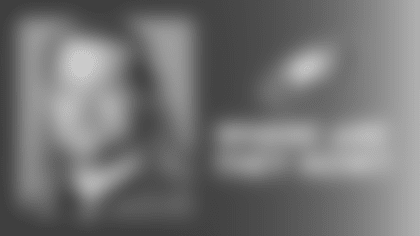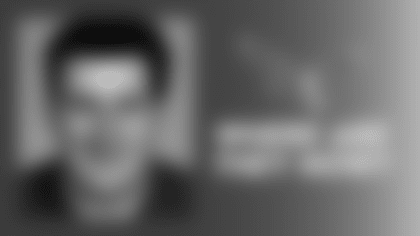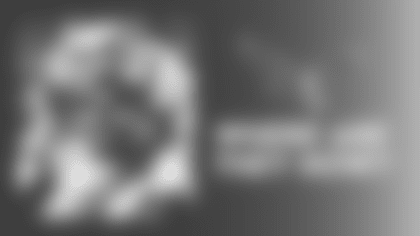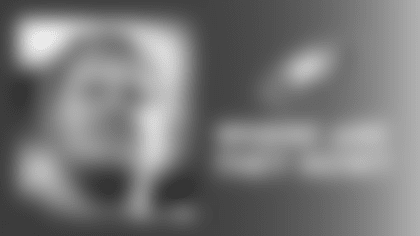He may have been raised in High Point, North Carolina, and drafted by Denver in 1976, but when James Betterson joined the Eagles as a free agent a year later, he became a Philadelphian.
Betterson didn't make the Broncos, but was advised to hang around the city in case he was needed. He wasn't, but made enough of an impression to warrant a recommendation.
"One of Coach (Dick) Vermeil's mentors, John Ralston, was the head coach of the Broncos. And after that season in Denver, John Ralston got fired," Betterson says. "And I guess he put in a word for me with Coach Vermeil even though I didn't play. He called and told him that it was a good idea to try to sign me because they had me on the team and might have made a mistake in not putting me on the roster."
Philadelphia's roster became a little more crowded at running back after Betterson was signed and Wilbert Montgomery and Cleveland Franklin were chosen during the 1977 NFL Draft.
"I was told that Coach Vermeil had come in (in 1976) and didn't make a lot of changes, since he was coming from college," Betterson says. "And in '77, 17 new people made the team. I think they were just kind of like grabbing as many players as they could to try to create the best team they could.
"I knew it was going to be competitive. Our (position) coach was a good guy, Johnny Roland, and we had a nice little squad there with him: Mike Hogan, Wilbert, Cleve, myself, and Tommy Sullivan."
While they were all talented running backs, there's only one ball and only so many downs in a game. But the Eagles wanted Betterson on the field. To do that, they had him become a fullback.
"At Carolina, we ran the I (formation), so the tailback, which is what I played, didn't get a chance to block a lot," Betterson says. "So I was kind of taken off guard when Coach Vermeil told me that because of Wilbert, because of Sullivan, that the only way I was going to make the team would be as a fullback. I just kind of accepted the challenge. Basically, I learned how to block sufficiently enough that he had confidence that if he put me in at fullback, I could block."
Despite clearing paths for the tailback being his main responsibility, Betterson finished as Philadelphia's third-leading rusher with 233 yards, which led Vermeil to have second thoughts.
"He saw my running ability and skill level at running and my quickness, so when I came back the next year, he cut some of us and put me at tailback behind Wilbert," Betterson said. "I was also considered the disaster fullback since I played that position. So we kept five running backs with the idea that I could play both positions."
Betterson played in nine games in 1978 before suffering a career-ending knee injury.
"I think during the time I was there, I got four game balls," he says. "One of them, I got for special teams because I ran back kickoffs, and in a win against Washington (on October 15, 1978, at Veterans Stadium), I got a return over midfield. It was a 44-yard return that spearheaded us to go ahead and win the game (17-10). So the short time I was there, I got a little recognition and felt like I was contributing."
Following his playing days, Betterson moved to Houston, where he owned and managed rental properties. But Philadelphia would call again. The first time for the Eagles and the second time in the early 1980s for an upstart television cable company.
"Cable was just getting divvied up, and one of the franchisees was a guy named Jim Wade – Wade Cablevision – and they hired me to be their first sales manager," Betterson says.
The third time the city called, Betterson began working for the Philadelphia Inquirer as its circulation manager.
"My staff would call people's homes through telemarketing. We would do direct mail. We had kids going knocking on the doors trying to get people to sign up," Betterson said. "The Inquirer was asking me to get them 5,000 new subscribers every week. That was in 2003 when newspaper readership was declining. They had the product on the internet for free. So needless to say, I was a whipping boy."
Parting ways after nearly three years, Betterson founded First Edition Marketing, which worked to increase circulation for publications in Pennsylvania, Connecticut, and New York. He would run that for the next 10 years.
"So, here I come to Philly for the Eagles. And I come back to be the cable manager. Then I come back to be the manager at the Inquirer. And then lastly, I come back to open BetterClean Laundry," Betterson says. "It just seems like I've always had a love affair with Philly. I ended up coming back four times for career moves."
Opening the Eagles' colors-influenced BetterClean Laundry in North Philly with no partners or any experience, Betterson relied on the adage – the thing about laundromats is the machines do all the work.
"I built something from scratch. It was an old delinquent laundromat. I gutted it and bought all new equipment," Betterson says. "I opened it in 2015 and sold it in '21. Mainly because I was getting a little older and starting to have some physical limitations. I ended up having both knees surgically repaired, and I think that affected my hips because you start walking differently and compensating.
"And so I decided that maybe it was time for me to get out. I had taken it from zero up to that point, and it still had a lot of growth left to go. I put it on the market and got three bids right away. I thought it might take a year to sell, but it sold so quick I almost wanted to take it back off the table."
Now retired and making his home in Atlanta, Betterson, who is engaged to Marguerite Epps, has three children: James III, Justin, and Ashley; and two grandchildren.



